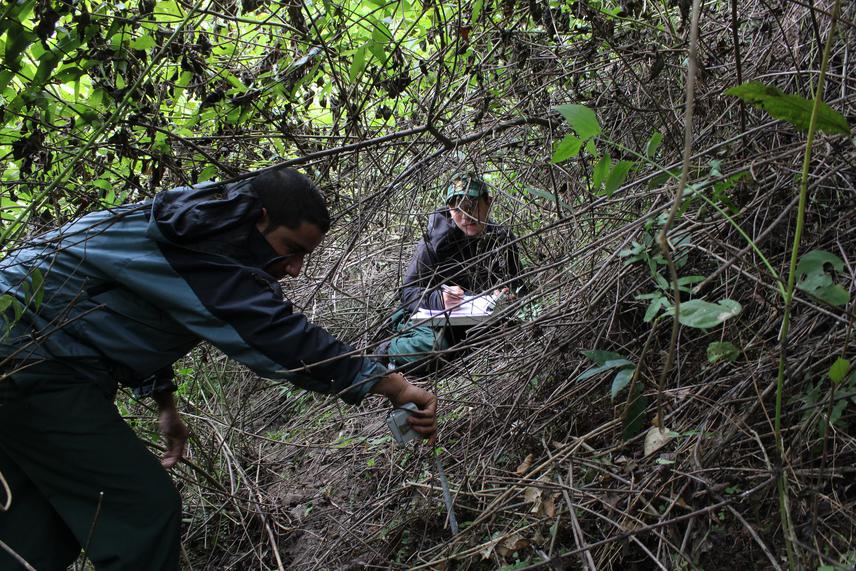Damber Kumar Ghemiray
There is a lack of information on habitat characteristics and conservation threats within the proposed project area. Therefore, this project will assist in documenting habitat requisites by the bird, as many ecological functions such as reproductive success, recruitment and dispersal are directly dependent on it.

Counting regeneration of dominant tree species.
The proposed area consists of two nesting sites of WBH. Yet, the challenges faced in the area is a wide range of human disturbances including harvesting of food resources, timber harvesting, fishing and operational changes due to existing hydroelectric projects. These are perceived threats towards the activities geared towards conservation of this bird species.
In order to conserve an important habitat of White-bellied heron, it has become vital to understand the functions of this forest ecosystem and dynamics of forest structure and composition. The proposed research will generate information on the distribution and abundance of tree species of key significance. It is essential to have such information as WBH characteristically depend only on tree species for fulfilling their ecological requirements such as nesting and roosting. Maintaining of high quality habitat such as specific forest structural conditions and other essential attributes thereof is found crucial as to survive and reproduce successfully by the bird.
The proposed area is assigned as a captive breeding location by Royal Society for Protection of Nature (RSPN) and Department of Forest and Park Services (DoFPS). Therefore, this project will help to understand about the habitats characteristics of WBH. So that, releasing of captive bred WBHs will have suitable habitat to support them without having to bank the species in captivity. The results will also inform policy makers enabling them to design management actions in ways that either improve or minimize adverse effects to preferred habitat of WBH.
The study will be conducted in two Aspects (South West and North East) at Burichu area along Punatshangchu River. It is located at 63 km from Wangdi District along Wangdi-Tsirang highway at an average altitude of 520 masl. The area has steep slopes on either side of Punatshangchu with an extensive tract of deciduous broadleaved forest at the lower elevation and chirpine forest on the upper elevation. The average annual temperature ranges from 12.8 °Ϲ - 21.3 °Ϲ with annual precipitation of 783.5mm (Source: RNR-RDC, Yusipang).